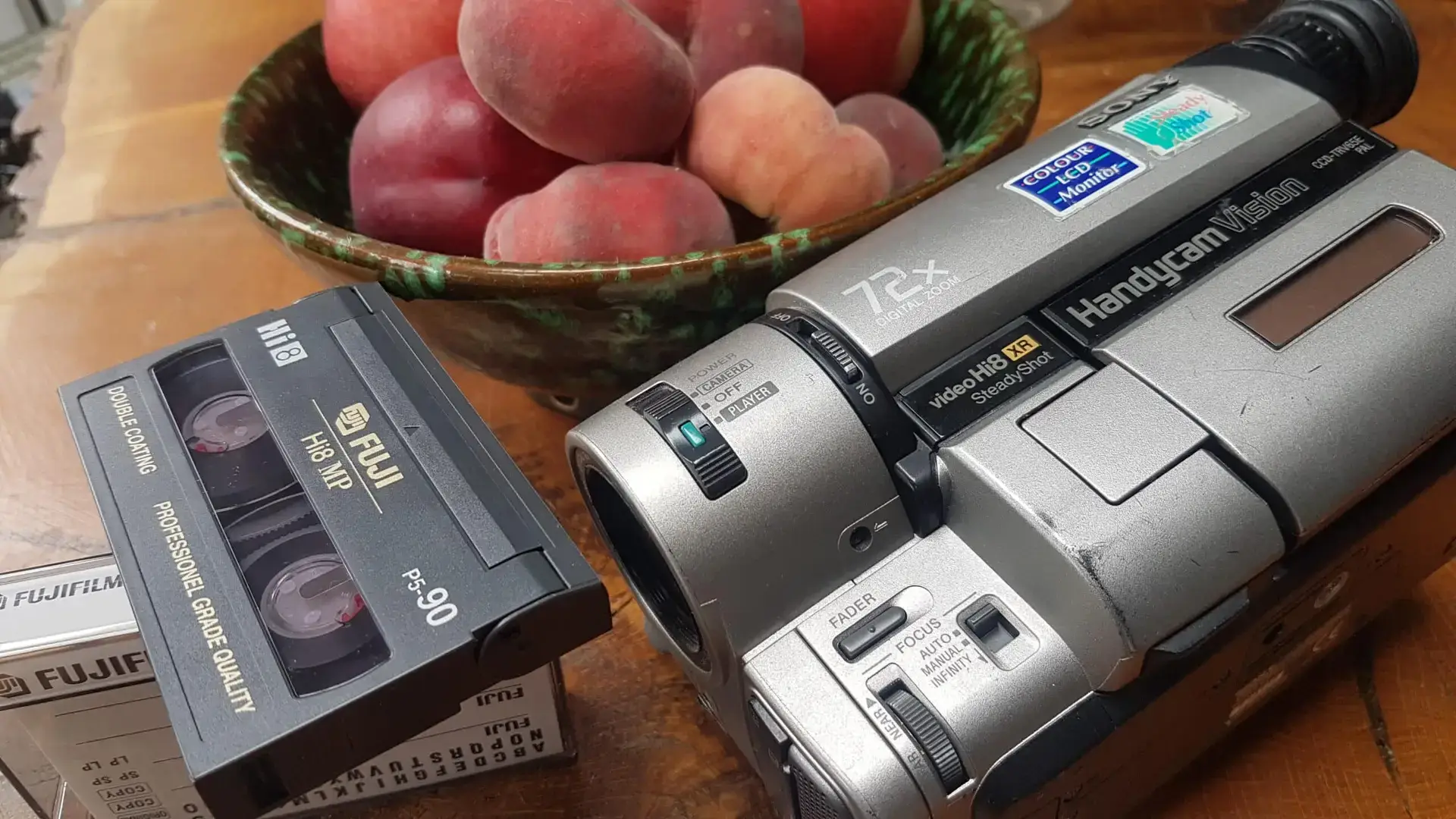


Converting Hi8 tapes to a digital format can be a rewarding process, but it can also present some challenges. Here are some common issues you might encounter when you digitise Hi8 tapes and how to address them:
One of the primary challenges is finding a Hi8 camcorder or playback device that is still functional. Since Hi8 is an older format, compatible equipment may be hard to come by. If you don’t have a working Hi8 camcorder, you might need to search for used ones online or borrow one from someone who has it.
Over time, analogue tapes like Hi8 can degrade, leading to a loss of audio and video quality. This is especially true if the tapes were stored improperly. Before converting, check the condition of your Hi8 tapes. If you notice any signs of degradation (such as distortion, colour shifts, or audio dropouts), consider having the tapes professionally cleaned and restored before converting.
Converting analogue tapes to digital format can be time-consuming, especially if you have a large collection of tapes. The conversion process involves playing each tape in real-time while capturing the video and audio digitally. You’ll need to allocate sufficient time for this task.
The process of connecting the camcorder or playback device to a computer and capturing the footage might require some technical knowledge. You’ll need the appropriate cables and software to facilitate the transfer. If you’re not comfortable with this process, you might want to seek assistance from someone who is more tech savvy and aware of how to address issues that may come up such as an issue like mould on tape.
Once you’ve captured the footage, you’ll need to decide on the digital file format and compression settings. Choosing the right format ensures compatibility with modern devices and editing software. Additionally, compression settings affect the file size and quality. It’s essential to strike a balance between quality and file size.
After converting the Hi8 tapes to digital, you might want to edit the footage or organise it into a more user-friendly format. Video editing software can help you trim, enhance, and arrange your footage. This step can also be time-consuming, especially if you’re new to video editing after the fun of having to digitise your hi8 tapes..
When you ask yourself, how to get hi8 tapes to computer, remember that digital video files can take up a significant amount of storage space. Ensure that you have enough storage on your computer or external hard drives to accommodate the converted files. Consider creating backup copies of your files to prevent data loss.
When you digitise 8mm tapes, sometimes, the conversion process can cause a slight desynchronization between the audio and video tracks on analogue tapes. How do I convert Hi8 tapes to digital? Well, too often, people completely overlook the issue of audio. Video editing software can usually fix this problem by manually adjusting the audio synchronization. Audio sync, short for audio synchronization, refers to properly aligning audio and video elements in a video recording. In any video or film, the audio and video components are recorded separately but are intended to be played back together in perfect harmony. Audio sync ensures that the sound you hear is perfectly timed with the actions and movements you see on the screen.
When audio and video are out of sync, it indicates a timing discrepancy between the two. For example, you might see a person speaking on screen, but the audio of their speech is delayed or ahead of their lip movements. This discrepancy can be distracting and negatively impact the viewer’s experience, making the content appear unprofessional or poorly produced.
Audio sync issues can occur for various reasons, including technical glitches during recording, editing, or playback processes. Converting analogue video tapes like Hi8 to digital formats can pose risks; the synchronization between the original audio and video tracks can get slightly disrupted and can affect audio quality.
Given these challenges in digitizing Hi8 tapes, it’s important to approach the conversion process with patience and care. If you’re unsure about any step, it’s a good idea to seek a dedicated company for 8mm to DVD service like Supaphoto.